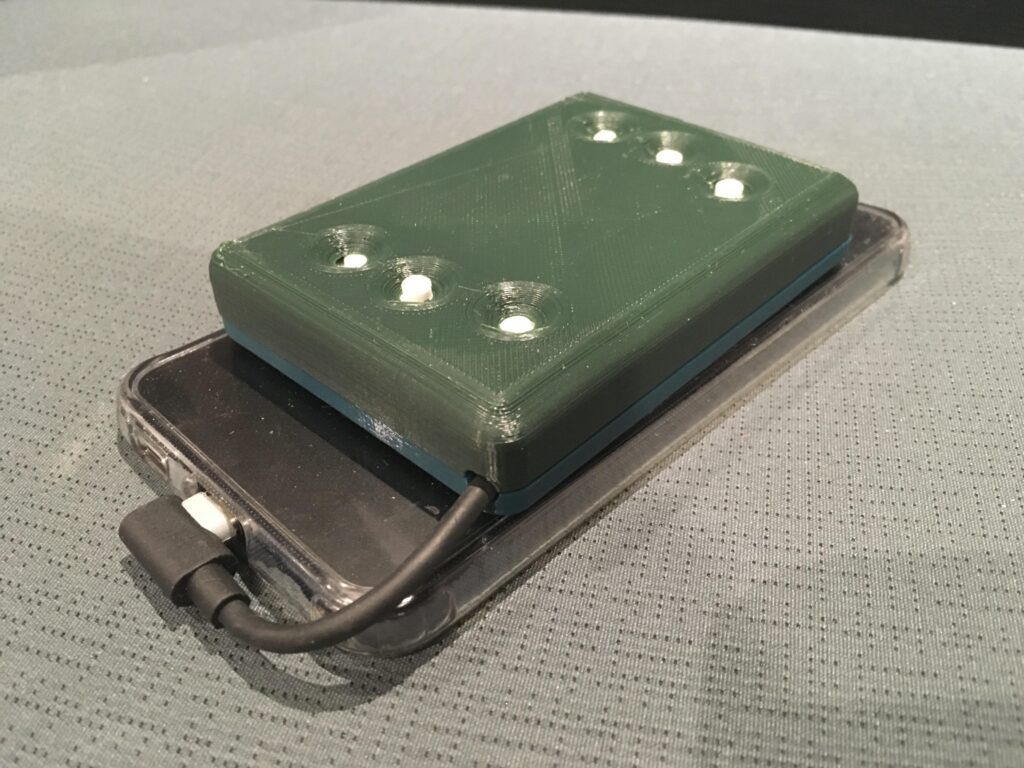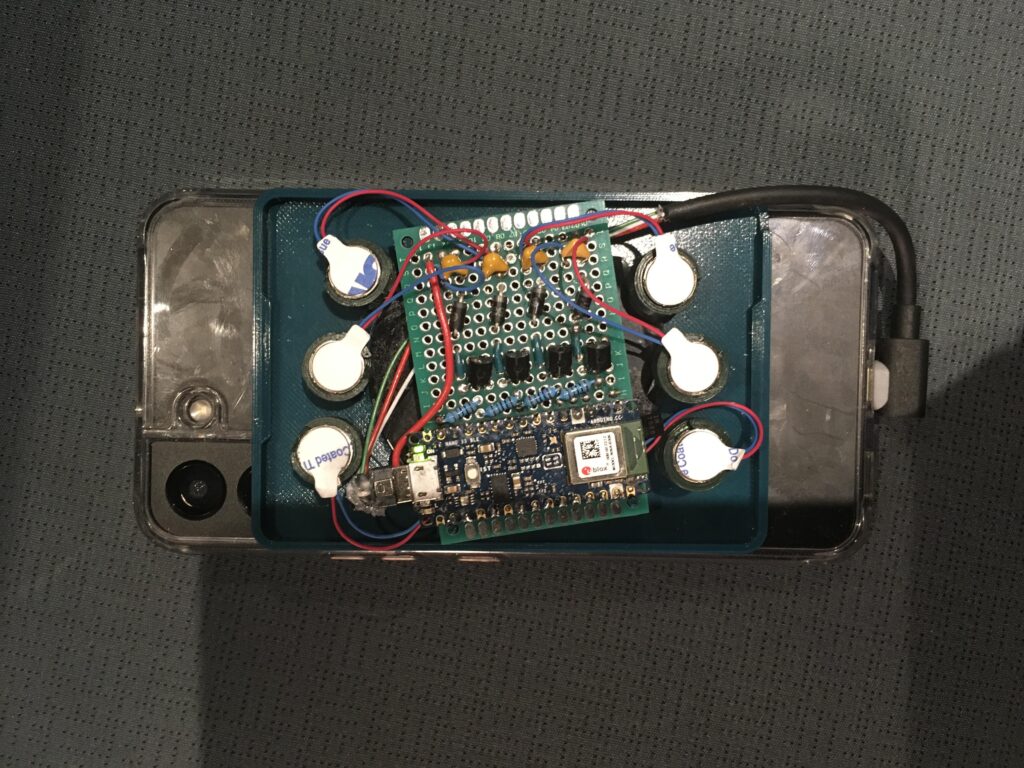
For the visually impaired community, most of their interactions on mobile phones are confined to text-to-speech (TTS) interfaces that read portions of the screen aloud. Dynamic braille displays also exist as a tactile means of communication, but their prices can get close to $15,000, putting them out of reach for most people. This is why Instructables user bmajorspin wanted to create an inexpensive, portable alternative that could work with other mobile devices.
Unlike other braille displays that use moving pins, this design leverages a set of six static pins housed within a 3D-printed enclosure that can vibrate independently. After connecting six haptic motors to an Arduino Nano 33 BLE through MOSFET drivers, bmajorspin mounted the entire circuit onto a small piece of perfboard and then soldered a micro USB cable for power. Lastly, a spring and 3D-printed cap were placed over each braille dot to isolate the vibrations and prevent the haptic signals from becoming muddled together.

The Nano 33 BLE is able to display braille characters thanks to it acting as a Bluetooth® Low Energy server that exposes a custom braille reader service. Through it, bmajorspin’s custom Android app can send encoded dot patterns to the device for it to then decode and present with the haptic motors.
More information about this highly accessible braille reader can be found here on Instructables.

Victor osuhon
Nice
Zita boo
Interesting
Asabilly
Interesting